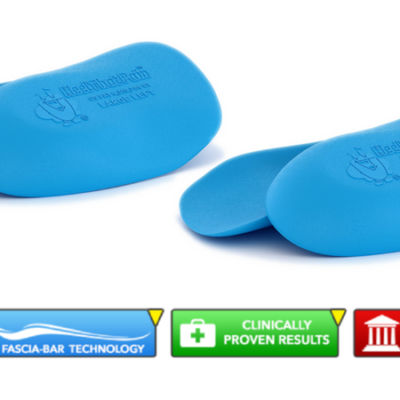Metatarsalgia: Its Causes And Treatment Options
Plantar fasciitis is one of the most common conditions of heel pain, however, you may be experiencing discomfort in other areas of the foot and need to discover what may be causing it. This article will acquaint you with Metatarsalgia – a condition associated with pain in the ball of the foot rather than the heel. You will also find information about risk factors and treatment options for this common ailment.

What Is Metatarsalgia?
Breaking down this long word is a good place to start. The metatarsal bones are the five bones that span from the arch of the foot to the base of the toes. ‘Algia’ is a suffix meaning ‘nerve pain’. In essence ‘Metatarsalgia’ can be defined as pain in the metatarsal area of the foot. You may have developed this condition if you experience one of more of the following symptoms:- Pain in the ball region of the foot that you would describe as aching, burning or stabbing
- Pain, tingling or numbness in the toes
- Pain in the ball and toes of the foot which worsens after physical activity, including standing and walking, but which lessens when you rest
- An increase in pain the ball of the foot when you walk barefoot on a hard surface or when you flex the arches of your feet
Risk Factors For Metatarsalgia
Check the following list of factors to factors to see if the apply to you:- Do you wear high heels or shoes with narrow toes? If yes, these are very common causes of the foot pain associated with Metatarsalgia.
- Are you engaged in a high-impact sport or involved in a rigorous athletic training program? If so, repetitive pressure being put on the feet can lead to Metatarsalgia.
- Have you gained weight? This can place extra pressure on the balls of your feet when you stand and walk and may result in Metatarsalgia.
- Do you have high arches or hammer toes? Both can result in undue stress and pressure being applied to the ball of the foot and can cause you to develop Metatarsalgia.
- If you have a physical issue such as bunions or a bone fracture, you must seek medical treatment to remedy the cause or you are likely to develop Metatarsaglia due to a change in gait, caused by these problems.
- Metatarsalgia is often found in conjunction with Morton’s Neuroma – the growth of noncancerous tissue around nerves between the third and fourth metatarsal bones. Like Metatarsalgia, Morton’s Neuroma commonly develops due to the use of improper footwear.
Treatment Options For Metatarsalgia
Follow these protocols to reduce pain in the balls of your feet and to work toward recovery from Metatarsalgia.- Resolve to put health before fashion. Shoes with high heels, narrow toes or an uncomfortable fit cause painful health conditions. Replace ill-fitting footwear with shoes that offer good support and a proper fit.
- Reduce high-impact activities. If you’ve developed Metatarsalgia as a result of rigorous exercise, you must cut back on your activities. Feet bear the brunt of standing, walking and running every day and need adequate rest from the tasks.
- Work toward achieving a healthy weight. Obesity causes a host of problems, including foot pain. Work with a doctor or nutritionist to find a safe way to reach a healthy weight.
- Ice you feet for quick relief. While you are giving your feet a rest, the application of an ice pack can help reduce inflammation and relieve pain temporarily.
- Support your feet with a good orthotic insert. If you’ve developed a condition like Metatarsalgia due to the use of improper footwear, you can improve your chances of recovery by adding extra support to properly-fitting shoes. HTP Heel Seats absorb shock when you walk, cushion the foot and apply gentle, therapeutic acupressure to stimulate your body’s natural ability to heal itself. The use of shoe inserts may speed up your recovery time and prevent future episodes of foot pain.
- Seek Medical Help, If Necessary. If the above five techniques do not yield lasting relief from pain in the balls of your feet, you should see a doctor. It may be that you will require pain medication, physical therapy or other assistance. Most cases of Metatarsalgia can be treated at home via the methods described above, but if your pain persists, seek the advice of a physician.
What Will Happen If I Ignore My Symptoms?
It’s never safe to ignore foot pain. In the case of Metatarsalgia, ignoring your symptoms may lead to chronic, debilitating pain in the feet that can put you on the sidelines of life. Additionally, you may develop secondary conditions of ongoing pain in the hips, back and neck. Healthy feet support an active, happy life. Pay early attention to foot pain symptoms so that you can correct the causes before chronic health problems result. Have Questions About Foot Health? Call Our Experts At 877-215-3200.






